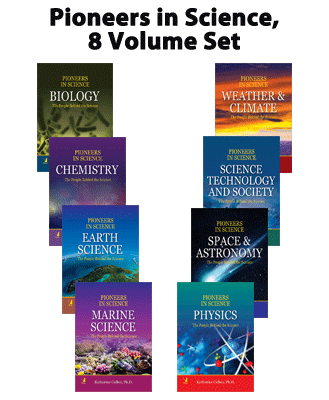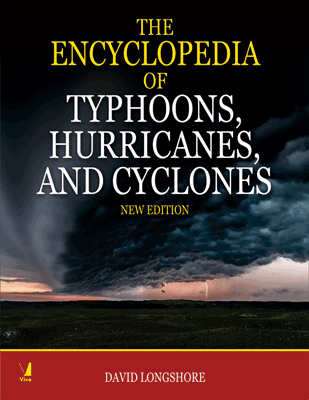The Encyclopedia of Space and Astronomy
The Encyclopedia of Space and Astronomy
₹3,145.50 ₹3,495.00 Save: ₹349.50 (10%)
Go to cart-
Out of Stock
ISBN: 9788130933528
Bind: Hardbound
Year: 2016
Pages: 752
Size: 216 x 280 mm
Publisher: Facts On File Inc.
Published in India by: Viva Books
Exclusive Distributors: Viva Books
Sales Territory: India, Nepal, Pakistan, Bangladesh, Sri Lanka
Reviews:
“...[a] highly informative, well-organized introduction...”
—American Reference Books Annual
“Both academic and public libraries will find this a useful reference...Recommended.”
—Choice
“...chock-full of useful and unusual information...a valuable addition to any smaller collection serving
serious students..."
—School Library Journal
“...splendidly informative...provides a treasure store of information dealing with astronomy and space
technology, not to mention some geology and mathematics...endlessly fascinating...a valuable resource
for high school astronomy and physics classes and in college science libraries.”
—VOYA
“...a fine addition to both public and academic libraries...”
—Reference Reviews
“...recommendedfor high school, academic, and larger public libraries and astronomy collections.”
—Library Journal
“...provides current, authoritative information...recommended for libraries in need of a general
encyclopedia on space and astronomy.”
—Booklist
Description:
Providing current and accurate information, The Encyclopedia of Space and Astronomyis a useful reference for high school and college students. Comprehensive coverage includes significant breakthroughs in space and astronomy, in addition to definitions of basic related terms, thought-provoking essays, and capsule biographies of notable scientists. Written in an easy-to-understand format, the encyclopedia examines the technical, social, and philosophical influences that space and astronomy have on contemporary life.
Featuring more than 3,000 cross-referenced entries, the encyclopedia includes 15 essays, interspersed throughout the text. It discusses a variety of fascinating topics, including the hazards of space travel, space technology and national security, and the consequences of interstellar contact. Enhanced by more than 200 black-and- white illustrations, photographs and charts.
The encyclopedia also includes five helpful appendices-a bibliography of print resources, an extensive list of Web sites) a chronology of significant events in space and astronomy, a table of basic planetary data, and an interesting breakdown on how planets and other celestial bodies were named-as well as an extensive index.
The Encyclopedia of Space and Astronomy is an indispensable resource that will meet the specific demands of students, interested laypeople, and professionals who need accurate and straightforward information on historical or current issues related to space and astronomy.
Entries include Apollo Project • Black hole • Center of gravity • Dark matter • General relativity • International Space Station • Kepler's laws • Lunar bases and settlements • Nuclear reactor • Pioneer 10, 11 spacecraft • Robotics in space • Rocket • Satellite • Unidentified Flying Object (UFO) • X-ray astronomy • Zodiac
.
Target Audience:
Scholars, High School, Colleges and Public Libraries.
Contents:
Acknowledgments • Introduction • Entries A to Z • Feature Essays:”We Are Made of Stardust—Moon Bases and the Third Millennium—The Ballistic Missile: A Revolution In Warfare—Cape Canaveral: The American Stairway to the Stars—Hazards of Space Travel—Switchboards in the Sky—Will It Rain on My Parade”—Reaching Beyond the Solar System—Role of the Radioisotope Thermoelectric Generator (RTG) in Space Exploration—Space Technology and National Security—Space-Age Archaeology—Space-Age Guardian Angels—Consequences of Interstellar Contact—Mariner: The Family of NASA Spacecraft that Changed Our Understanding of the Inner Solar System—Cosmic Consequences of Space Exploration” • Appendixes: Appendix I: Further Reading • Appendix II: Exploring Cyberspace • Appendix III: A Chronology of Space and Astronomy • Appendix IV: Planetary Data • Appendix V: How Planets, Moons, Asteroids, Comets, and Interesting Celestial Objects and Planetary Surface Features Are Named • Index
About the Authors:
Joseph A. Angelo, Jr., Ph.D., a retired U.S. Air Force lieutenant colonel, is currently a consulting futurist and technical writer. An adjunct professor of physics at Rollins College, he teaches an introductory astronomy course on the “Evolution of the Universe.” Dr. Angelo is also the author of The Encyclopedia of Space and Astronomy Handbook







